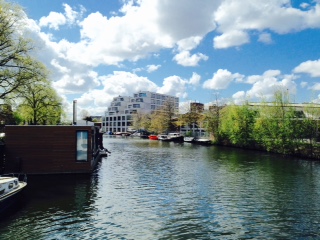The PARCOUR Handbook – Effective Policy Delivery in Contractual Urban Regeneration

The Public Accountability to Residents in Contractual Urban Redevelopment (PARCOUR) project has recently completed its project handbook, exploring examples of effective policy delivery in the nine case studies spread across Brazil, the Netherlands and the United Kingdom. The PARCOUR project is designed to study the diverse planning tools that exist within the three countries to identify how public accountability is included within the contractual phase of the redevelopment of previously developed land, or brownfield sites. The handbook shares the main findings and policy recommendations identified through the research.
Previously developed land, or brownfield sites, offer towns and cities the opportunity to create new infrastructure that can be used as public, office or industrial space and housing to meet the needs of the community. Each of the nine case studies provide a differing approach to urban regeneration, despite the inclusion of a public private partnership agreement being agreed to deliver the scheme(s).
Section 4 of the handbook outlines examples of the effective policy delivery in each case study. These methods of policy delivery are divided into five thematic areas:
- The role of different levels of government;
- Effective governance structures;
- Collaborative structures for implementation;
- Strategic vision; and
- Creating sustainable, inclusive, vibrant and viable developments.

Securing agreement between the various levels of government in countries is pivotal to ensuring that the regeneration is delivered. In the case of Porto Maravilha, Rio de Janeiro, the national, state and municipal governments in Brazil all worked together allocating different roles within the delivery process. The municipality was responsible for formulation and implementation of the scheme, the federal government guaranteed access to funding for public works through a real estate investment fund and the state government released land for the site.
In Gloucester, United Kingdom, an effective governance structure was set up to act as a ‘buffer’ between the private sector developers and the local municipality planners, to bring forward urban regeneration of seven sites within the city. The Gloucester Heritage Urban Regeneration Company, led by highly respected chief executive, Chris Oldershaw, developed a holistic approach to regeneration within the city, securing £100m of public sector investment and £600m of private sector investment into the city.
Collaborative structures are essential to ensure the regeneration is delivered. In the city of Bristol, an organisation called On Site was set up to employ local people on construction projects taking place in the city. This approach was used as part of the regeneration process of Bristol Harbourside, with the idea of ensuring the benefits of the regeneration process stayed within the city. This approach was so successful at Harbourside that developers of the Children’s hospital, new office developments and the shopping centre have all used On Site as part of the delivery process.

In terms of developing a strategic vision, the Buiksloterham development in Amsterdam has taken an alternative approach to the traditional master-planning approach. The development has no overarching philosophy, instead deciding to ‘let things happen’. Developments on the site, a former dockyard, are taking place in different lots and offering a variety of options such as self-build housing, private developments and municipality developments of services. The site as been referred to as a ‘living lab’, enabling bottom-up development.
Creating sustainable, inclusive, vibrant and viable developments can be one of the biggest challenges for developers due to the changing requirements of towns and cities and the temporal nature of urban regeneration taking place over many years. Each country has produced excellent examples of where this regeneration has created vibrant new areas of the town or city. In Taunton’s case this has included providing social value to the community through the regeneration of the Great Western Hotel. The derelict building was owned by government body Network Rail, and recently sold to YMCA Somerset who plan to turn the building into a hotel and training centre for vulnerable individuals, helping them to return to work. The plans include a training school and sheltered accommodation. Network Rail turned down higher private bids for the site, placing social value to the community higher on their list of priorities for regenerating the site.
The handbook provides a range of examples that demonstrate where the public interest is served through good governance, strong leadership, alternative planning processes and a focus on the community. These best practice examples should be considered by the various organisations embarking on future urban regeneration processes to ensure the public interest is served by the schemes delivered.